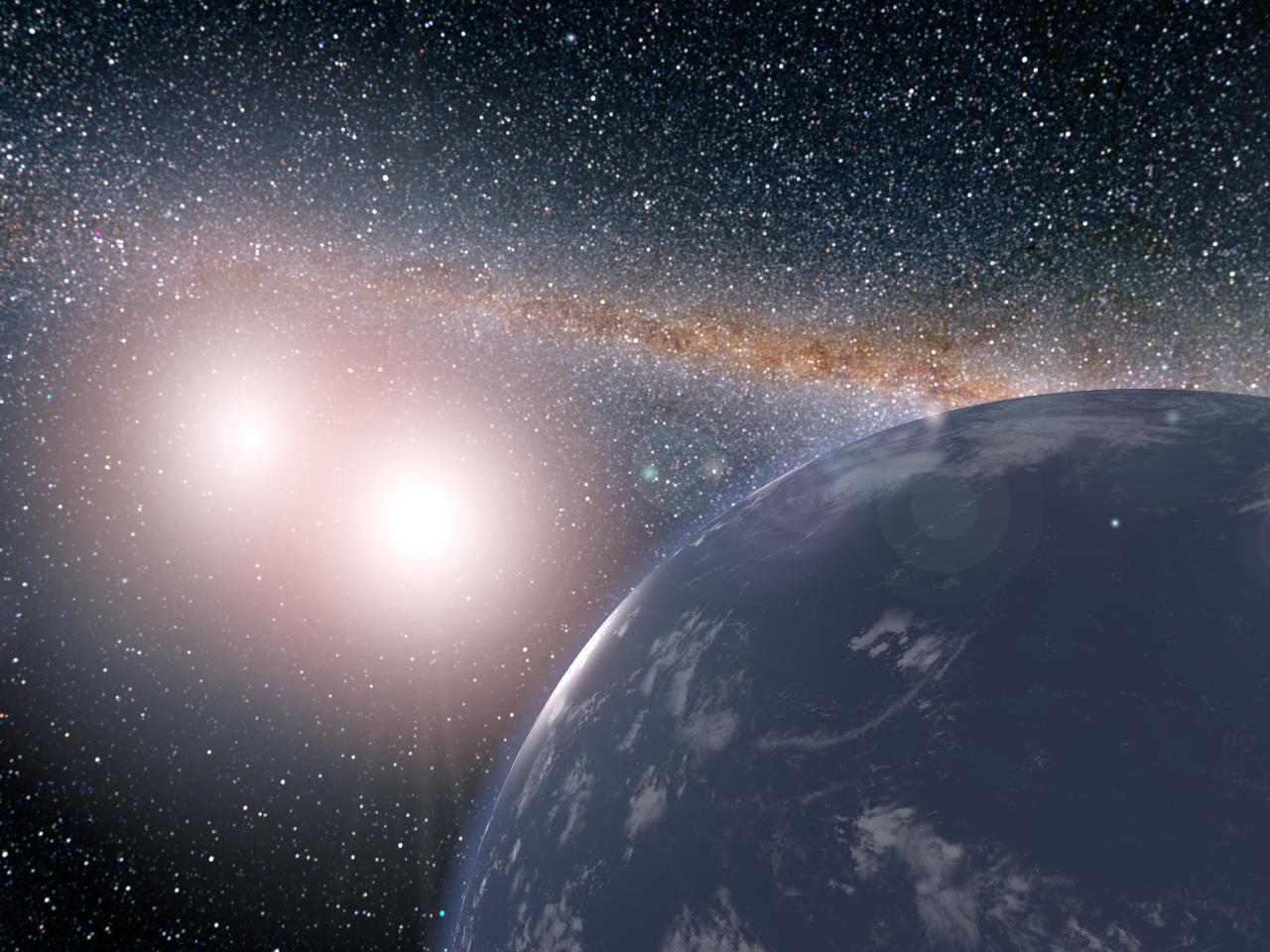Some 'Tatooine' Alien Planets May Be Able to Support Life

Life on an alien planet with two suns in its sky, like Luke Skywalker's home world Tatooine in the "Star Wars" films, may indeed be possible, a new study suggests.
A Tatooine world could be habitable despite its inevitably complicated orbit, as long as the planet stays within a particular range of distances from its two host stars, researchers said.
"This means that double-star systems of the type studied here are excellent candidates to host habitable planets, despite the large variations in the amount of starlight hypothetical planets in such a system would receive," Max Popp, an associate research scholar at Princeton University in New Jersey and the Max Planck Institute of Meteorology in Hamburg, Germany, said in a statement. [10 Real Alien Worlds That Resemble 'Star Wars' Planets]
Popp and Siegfried Eggl, a Caltech postdoctoral scholar at NASA's Jet Propulsion Laboratory in Pasadena, California, investigated the "habitable zone" for Tatooine worlds — that just-right range of orbital distances at which liquid water, and perhaps life as we know it, could exist on a planet's surface.
Nailing down the habitable zone for single-star planets isn't simple or straightforward; details of the zone depend heavily on the nature of a world's atmosphere, for example. But habitable zones get even trickier when the planet in question has two suns.
Tatooine planets' habitable zones, after all, depend on the distance from the two host stars' center of mass, not just the distance from any particular star. And Tatooine worlds don't orbit in a circular path; their paths wobble considerably due to the gravitational influences of their parent stars, researchers said.
To better understand such factors, Popp and Eggl modeled conditions on a hypothetical Earth-size, water-covered world in Kepler-35, a real two-star system more than 5,000 light-years from Earth that's known to host a planet eight times more massive than our own. (Popp and Eggl ignored the gravitational influence of this actual planet, which is known as Kepler-35b, for simplicity's sake.)
Breaking space news, the latest updates on rocket launches, skywatching events and more!
"Our research is motivated by the fact that searching for potentially habitable planets requires a lot of effort, so it is good to know in advance where to look," Eggl said in the same statement. "We show that it's worth targeting double-star systems."
The duo's simulations investigated what this imaginary Tatooine world's climate would be like if it orbited with periods between 341 and 380 Earth days.
They found that, near the outer edge of Kepler-35's presumed habitable zone, the planet would be relatively cold and dry. The dearth of atmospheric water vapor would also make the climate quite variable; global average surface temperatures would swing by as much as 3.6 degrees Fahrenheit (2 degrees Celsius), the researchers said.
"This is analogous to how, on Earth, in arid climates like deserts, we experience huge temperature variations from day to night," Eggl said. "The amount of water in the air makes a big difference."
But conditions would be quite hospitable, and much more stable, near the habitable zone's inner edge, thanks to the water vapor's stabilizing influence, the researchers said. (Just as with single-star systems, a planet beyond the outer edge of the habitable zone would become a "snowball" world, while one too close in would experience a runaway greenhouse effect like Venus did and end up a sweltering hothouse, they found.)
Interestingly, the duo's models suggest that Tatooine worlds have less cloud cover than their single-star counterparts, providing any hypothetical inhabitants with great views of their double suns.
The new study was published April 6 in the journal Nature Communications.
Follow Mike Wall on Twitter @michaeldwall and Google+. Follow us @Spacedotcom, Facebook or Google+. Originally published on Space.com.
Join our Space Forums to keep talking space on the latest missions, night sky and more! And if you have a news tip, correction or comment, let us know at: community@space.com.

Michael Wall is a Senior Space Writer with Space.com and joined the team in 2010. He primarily covers exoplanets, spaceflight and military space, but has been known to dabble in the space art beat. His book about the search for alien life, "Out There," was published on Nov. 13, 2018. Before becoming a science writer, Michael worked as a herpetologist and wildlife biologist. He has a Ph.D. in evolutionary biology from the University of Sydney, Australia, a bachelor's degree from the University of Arizona, and a graduate certificate in science writing from the University of California, Santa Cruz. To find out what his latest project is, you can follow Michael on Twitter.
